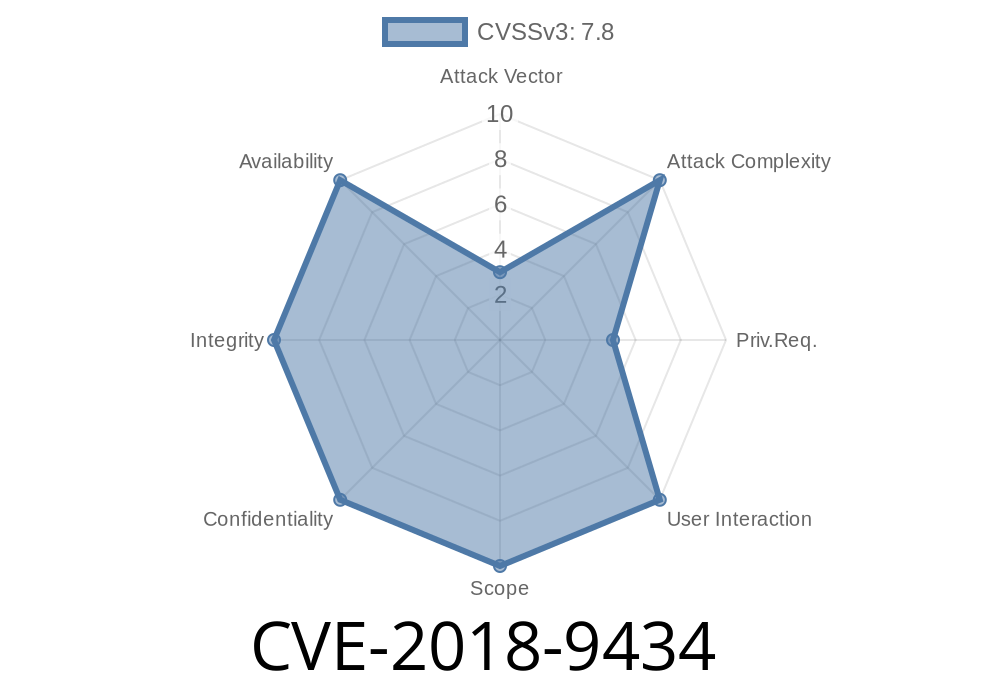In this post, we're going to analyze a vulnerability known as CVE-2018-9434 which can be exploited to bypass Address Space Layout Randomization (ASLR) in the Parcel.cpp file found in the Android operating system. We will examine the details of the vulnerability, show a code snippet that has been compromised, and discuss how to exploit it to achieve local privilege escalation. No additional execution privileges are required and user interaction is not needed for exploitation.
ASLR is a security mechanism implemented in most modern operating systems to randomize the locations of various system components in memory, making it difficult for an attacker to guess the addresses of critical system modules. This makes it more challenging for attackers to exploit certain types of vulnerabilities, such as buffer overflow attacks. However, CVE-2018-9434 presents a way for an attacker to bypass this mechanism, thus increasing the risk of privilege escalation.
The Vulnerability: CVE-2018-9434
CVE-2018-9434 is a vulnerability within multiple functions of Parcel.cpp that could potentially allow an attacker to bypass ASLR. This vulnerability is the result of improper input validation when handling certain data structures, which can lead to information leaks and other exploitation scenarios.
According to the official CVE entry for CVE-2018-9434, the vulnerability is rated as a 7.8 in terms of severity. It affects Android versions 6., 6..1, 7., 7.1.1, 7.1.2, 8., and 8.1.
Here is an example of a code snippet from Parcel.cpp containing the vulnerable function
status_t Parcel::readString8(String8* pResult) {
size_t len;
status_t err = readAligned(&len);
if (err != NO_ERROR) {
return err;
}
if (len == ) {
pResult->setTo("");
return NO_ERROR;
} else {
ssize_t trueLen = (ssize_t)len;
if (len > INT32_MAX) {
trueLen = INT32_MAX;
}
if ((len&1) != ) {
return BAD_VALUE;
}
const char* str = (const char*) mData->data() + mDataPos;
// SECURITY BUG: Code should validate if str is within mData bounds.
if ((size_t)mDataPos + len > mData->size()) {
return BAD_VALUE;
}
pResult->setTo(str, trueLen);
mDataPos += len;
return NO_ERROR;
}
}
As we can see, the code is missing a check to validate if the str variable value is within the bounds of the data buffer mData. This oversight can lead to the attacker being able to read data outside the intended memory region, potentially leaking sensitive information that could be used to bypass ASLR.
The Exploit
To exploit this vulnerability, an attacker could send specially crafted data to the affected Android device which would trigger the improper input validation behavior in the Parcel.cpp functions. This could result in sensitive memory contents being leaked back to the attacker, such as the locations of critical system modules in memory.
Armed with this information, the attacker can then craft a more sophisticated exploit that takes advantage of the knowledge of the system's memory layout. This exploit could potentially achieve privilege escalation, giving the attacker elevated privileges on the affected device without any user interaction required.
For a technical deep-dive into how this exploit could be crafted, here is an excellent write-up by security researchers at NCC Group.
Conclusion
CVE-2018-9434 is a serious vulnerability that could lead to local privilege escalation in several versions of the Android operating system. Although ASLR is in place to harden systems against successful exploitation, this vulnerability allows for its bypass, creating a potential attack vector for malicious actors.
It's essential for developers to be aware of such vulnerabilities and follow secure coding practices to prevent unintentional information leaks. Moreover, system administrators and users should keep their systems up-to-date with the latest security patches to mitigate risks associated with these types of vulnerabilities.
Timeline
Published on: 01/17/2025 23:15:12 UTC
Last modified on: 03/24/2025 16:15:16 UTC
